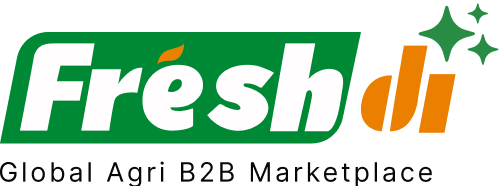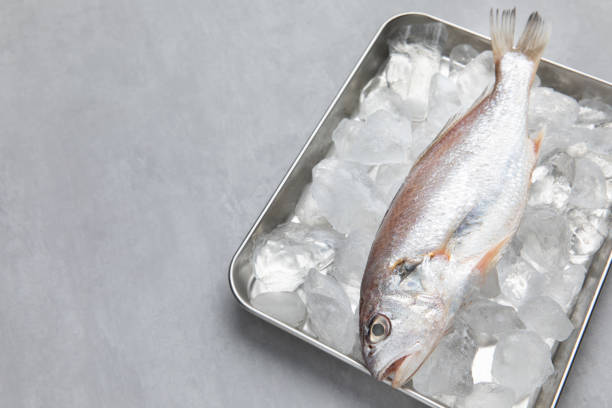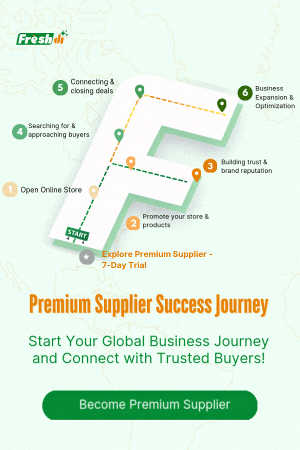Introduction – Current State of Play: The Frozen Fish Sector in Ukraine
It’s June 2025, and the frozen fish industry in Ukraine is navigating through one of its most pivotal phases in recent memory. From shifting trade alliances to post-war economic recovery efforts, the market is undergoing rapid transformation. After years of disruption due to geopolitical conflict, Ukraine’s seafood supply chain is adapting to a new reality, marked by both opportunities and challenges.
Imports are playing a vital role in fulfilling domestic demand, especially as the country’s own fishing operations in areas like the Black Sea and Sea of Azov remain limited. The combination of logistical innovation, international partnerships, and evolving consumer preferences has made staying informed more important than ever for industry players.
As we take a closer look at recent developments, one thing is crystal clear: businesses must be agile, data-driven, and well-connected to survive—and thrive—in Ukraine’s dynamic frozen fish market.
Deep Dive – What’s Making Headlines? Key Recent News & Impacts
Ukraine’s frozen fish market is proving to be far more resilient than many expected. Despite economic and logistical hurdles, the industry is showing signs of recovery and even growth in key segments.
Import Data Tells a Complex Story
In 2023, Ukraine imported around 213,600 tons of frozen fish—a 2.9% drop from 2022. But here’s the twist: even though the volume decreased, the import value jumped by 12.4% to $385.7 million. That means prices went up, and businesses were willing to pay more, possibly due to reduced local supply and stable consumer demand.
Moving into 2024, the first half continued this trend. Imports dipped slightly by 2.6%, landing at 112,600 tons. Yet again, the value rose—this time by 7.5%, totaling $208.9 million. The top three suppliers? The United States, Iceland, and Norway.
Geopolitical Impact and Logistics
Ongoing tensions have forced companies to reroute shipments and rely heavily on alternative ports. With Black Sea ports under threat or non-operational, logistics teams are now using land routes and neighboring countries’ ports to keep the supply chain moving.
Investment and Industry Stabilization
Though 2022 was a tough year, recovery began in 2023. Imports from the U.S. alone surged by 32% to $77 million. That’s not just a rebound—it’s a statement of resilience. Organizations like the Association of Ukrainian Fish and Seafood Importers have played a crucial role, helping businesses navigate red tape and logistical challenges.
Looking Ahead
By 2025, the Ukrainian fish and seafood market is expected to hit $42.95 million in revenue, with an annual growth rate of nearly 12% through 2029. Consumers are leaning toward healthier, sustainable options, and that’s pushing demand upward. Digital platforms and smarter procurement tools are also making it easier to connect suppliers and buyers.
Top 4 Verified Frozen Fish Suppliers in Ukraine – Navigating Current Market Realities
Finding trustworthy suppliers in a fast-changing market is no easy task. Thankfully, platforms like Freshdi make it easier to verify suppliers, track market trends, and send RFQs confidently.
Here are the top 4 frozen fish suppliers in Ukraine for June 2025, based on export capability, international presence, certifications, and Freshdi platform feedback:
- Pharm Export Group
- Specializes in high-quality frozen mackerel and white fish
- Verified exporter with HACCP and EU certifications
- Strong international presence in European and Asian markets
-
Known for reliability even amidst logistical challenges
-
UkrFish Trade LLC (Coming Soon to Freshdi)
- Diversified frozen product range including herring, pollock, and hake
- Domestic leader with growing export footprint
-
Invests in modern cold storage and eco-friendly processing units
-
SeaHarvest Ukraine Ltd. (Freshdi Verified)
- Focus on wild-caught species sourced from sustainable fisheries
- Strong ties with Icelandic and U.S. suppliers
-
Offers private labeling for international retail clients
-
OceanBridge UA (Freshdi Partner)
- Known for fast order turnaround and compliance with EU import standards
- Operates advanced packaging and quality control systems
- Supplies to hotels, restaurants, and distributors across Europe
Dynamic Ranking Note
Supplier performance can vary month to month depending on RFQ activity, delivery records, and customer feedback. Platforms like Freshdi offer dynamic rankings like “Supplier of the Month” or “Top Performer of the Quarter,” helping buyers quickly identify the most active and trusted vendors.
Market Navigation – Strategic Responses to Today’s Frozen Fish Landscape in Ukraine
The real challenge isn’t just sourcing frozen fish—it’s sourcing it the smart way. Here’s how businesses are adjusting their strategies to stay ahead in today’s market.
Immediate Opportunities
-
New Export Markets: A major win came in March 2025 when China opened its market to Ukrainian wild-caught fish. This creates new growth potential for local producers and exporters.
-
U.S. Surge: U.S. seafood exports to Ukraine hit a 10-year high in 2024, exceeding $96 million. White fish like cod and pollock saw particularly strong demand.
-
Consumer Trends: Demand is shifting toward sustainability. Products with eco-labels and traceable sourcing are performing better in retail channels.
Ongoing Challenges
-
Logistical Hurdles: Damaged roads, blocked ports, and increased fuel costs have made transportation a bottleneck.
-
Currency Fluctuations: The hryvnia’s depreciation has made imports more expensive, squeezing margins for both suppliers and retailers.
-
Infrastructure Damage: Some processing and storage facilities were hit during the conflict, causing supply chain delays and losses.
Strategic Adjustments
-
Alternative Routes: Businesses are redirecting shipments through ports in Lithuania and Turkey to bypass Black Sea congestion.
-
Supplier Diversification: Companies are actively looking for new suppliers in South America, China, and even Africa to hedge risks.
-
Local Production Push: Government and private initiatives aim to boost domestic aquaculture to reduce over-reliance on imports.
Short-Term Outlook
Despite the bumps, the market is optimistic. With China now in the mix and U.S. imports growing, Ukraine is becoming more integrated into global seafood trade. The key for businesses? Stay nimble, diversify sources, and invest in tech tools like Freshdi to stay ahead of RFQ trends and supplier performance.
Conclusion – Key Takeaways for Businesses in a Dynamic Market
Ukraine’s frozen fish sector in 2025 is a blend of cautious optimism and strategic resilience. While the country remains heavily dependent on imports, a recovering economy and new trading partnerships offer renewed hope.
Key Takeaways:
- Import values are rising even as volume dips—demand remains strong.
- The U.S., Iceland, and Norway are leading the supply chain, with China entering the scene.
- Businesses must be ready to reroute logistics and diversify suppliers to stay competitive.
How Freshdi Helps:
Freshdi empowers buyers with:
- Verified supplier profiles with certifications and export records
- Real-time RFQ insights and alerts based on market changes
- Dynamic performance rankings to highlight top-performing suppliers
- Tools to communicate directly with suppliers and negotiate contracts
In such a rapidly evolving market, intelligence is your best asset. And Freshdi is the platform that gives you that edge.
Key Buyer Checklist – Frozen Fish Sourcing in Ukraine (June 2025)
✅ Check supplier certifications (HACCP, EU-compliant)
✅ Use Freshdi to verify supplier activity and feedback
✅ Monitor currency fluctuations to time your purchases
✅ Prioritize suppliers with stable logistics and alternative routing plans
✅ Explore diversification—don’t rely on a single origin or supplier
Future Outlook
As we move into the second half of 2025 and beyond, Ukraine’s frozen fish market is expected to continue its recovery trajectory. New trade agreements, digital procurement platforms, and an increasingly eco-conscious consumer base are laying the groundwork for a more resilient and transparent seafood industry.
Platforms like Freshdi will be instrumental in shaping this future, connecting buyers with reliable suppliers and data-driven tools that make smart sourcing easier than ever.
References
- Tridge – Ukraine Frozen Fish Import 2023
- Tridge – First Half 2024 Import Data
- SeafoodSource – Ukraine Seafood Industry Recovery
- FAS USDA – Seafood Imports Rebound
- Statista – Ukraine Fish Market Forecast
- Investing.com – China Opens Market to Ukrainian Fish
- Eurofish.dk – Infrastructure Impact
- Time.112.ua – Ukraine Fish Supply Domestic Shortfall
FAQs
1. What are the most in-demand frozen fish types in Ukraine?
White fish like cod, pollock, and hake are currently leading in demand due to their versatility and pricing. Mackerel and herring also remain staples.
2. How reliable are Ukrainian frozen fish suppliers in 2025?
With platforms like Freshdi, you can verify supplier certifications, export history, and feedback, making it easier to find reliable partners even in uncertain times.
3. Is it safe to import frozen fish into Ukraine right now?
Yes, but logistics may require rerouting through ports in neighboring countries. Importers are advised to work closely with suppliers who have experience navigating current routes and infrastructure challenges.
4. What certifications should I look for when choosing a supplier?
Look for HACCP, ISO, and EU-compliant certifications. These indicate adherence to international quality and safety standards.
5. How does Freshdi help with sourcing frozen fish in Ukraine?
Freshdi offers verified supplier directories, real-time RFQ trends, dynamic performance rankings, and direct communication tools—making sourcing safer, faster, and smarter.


